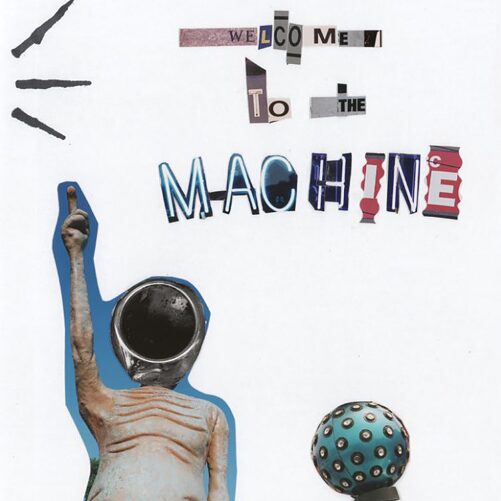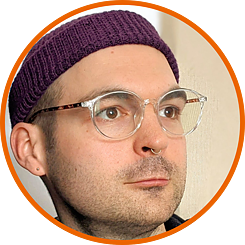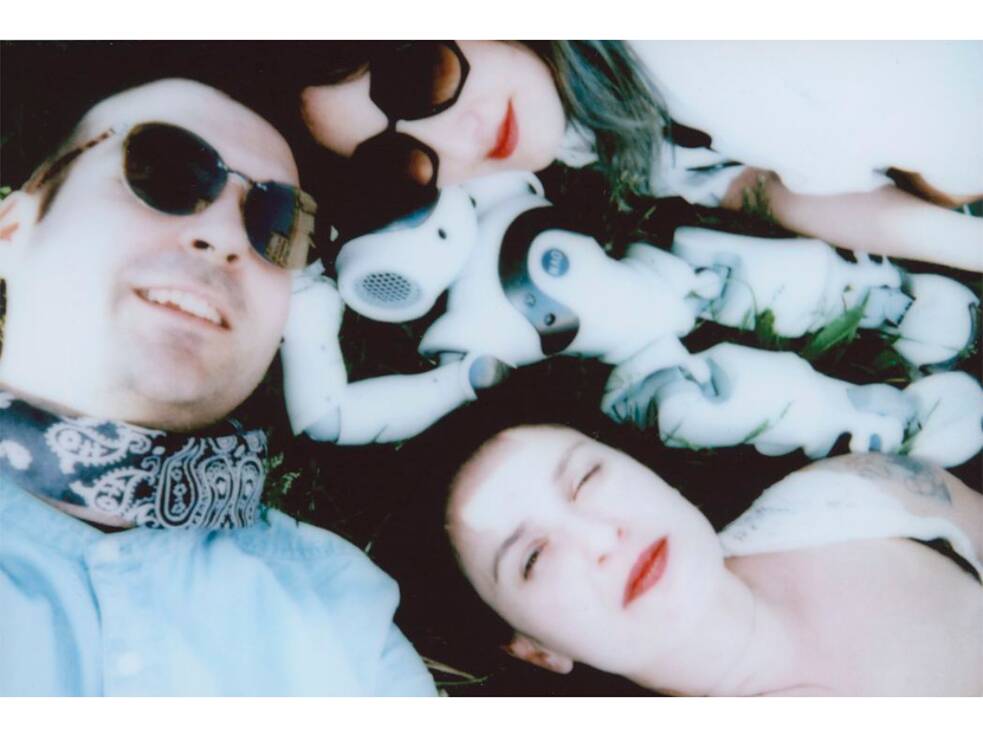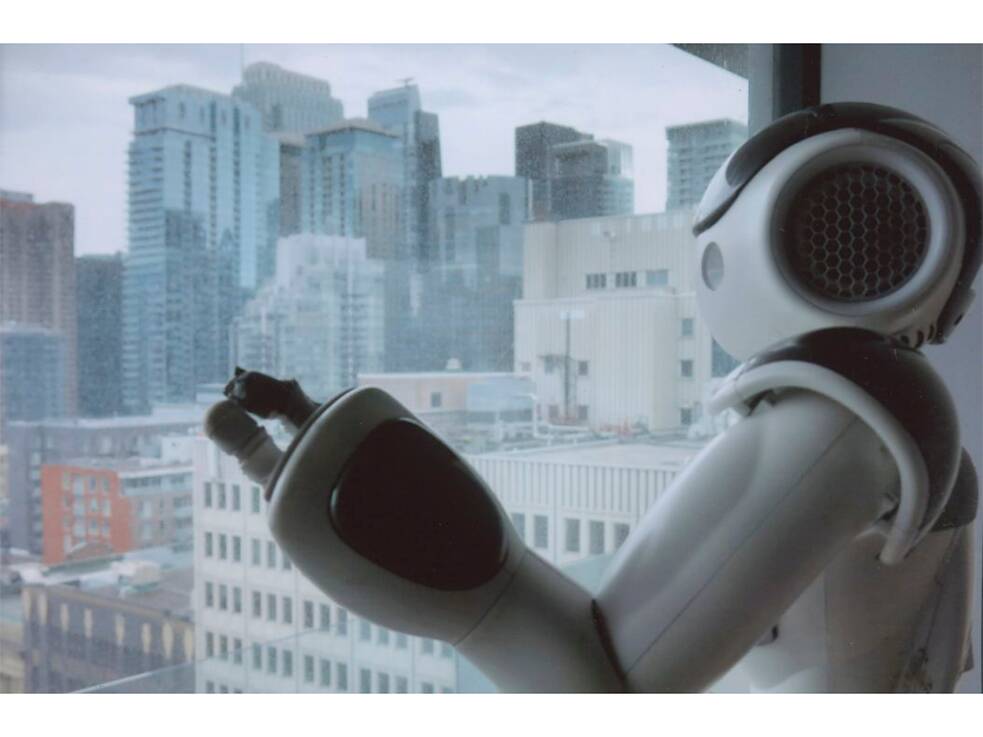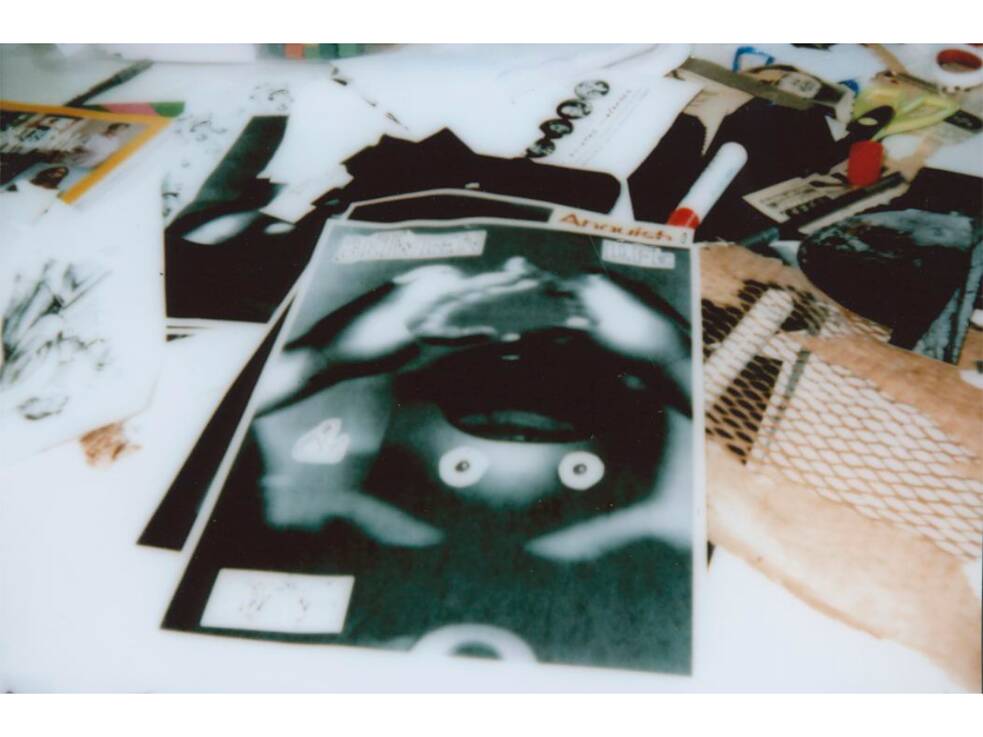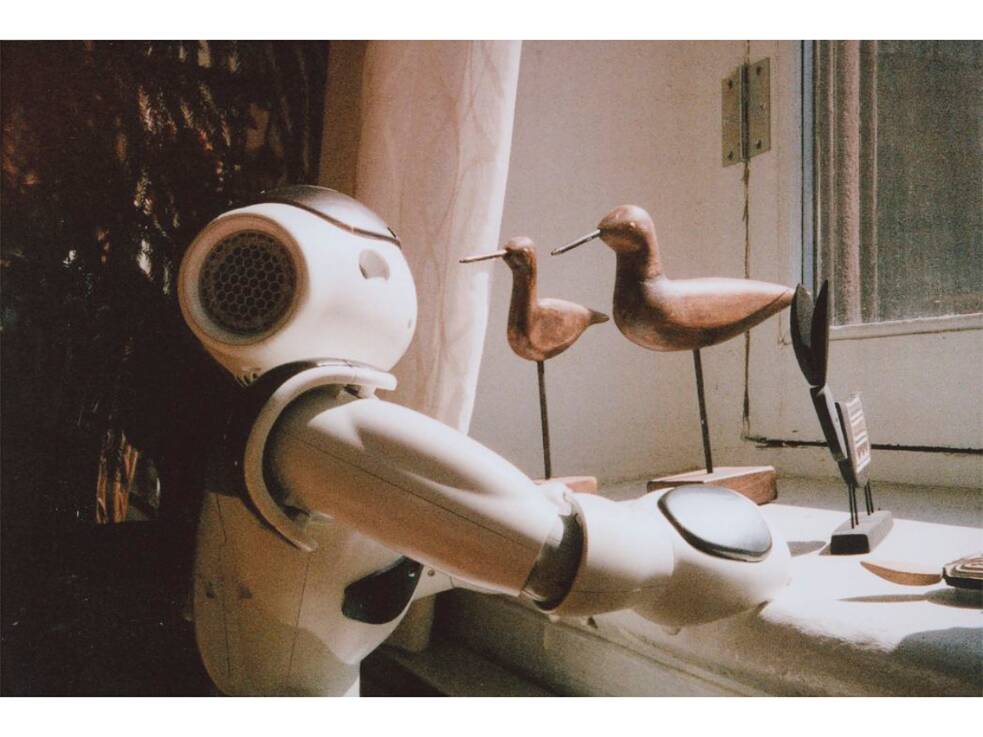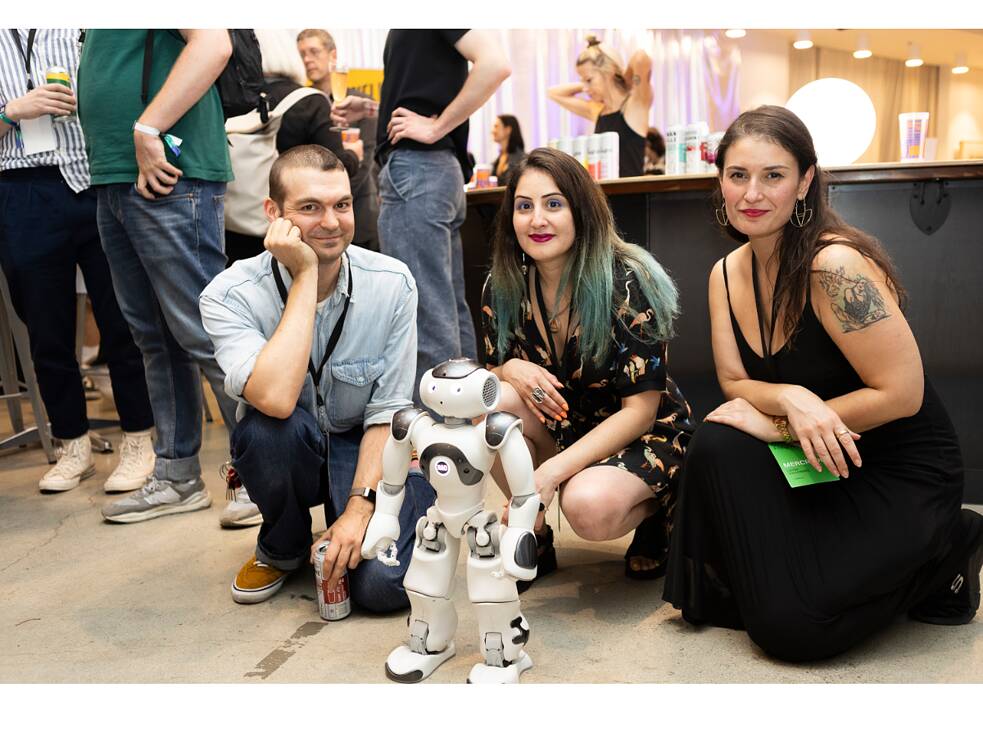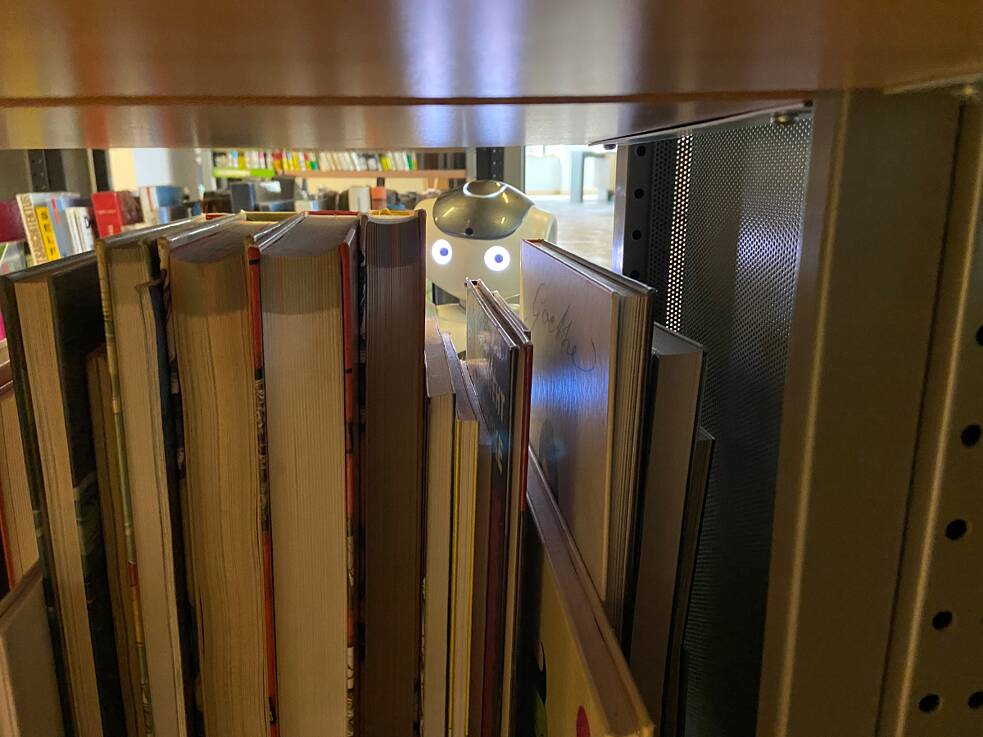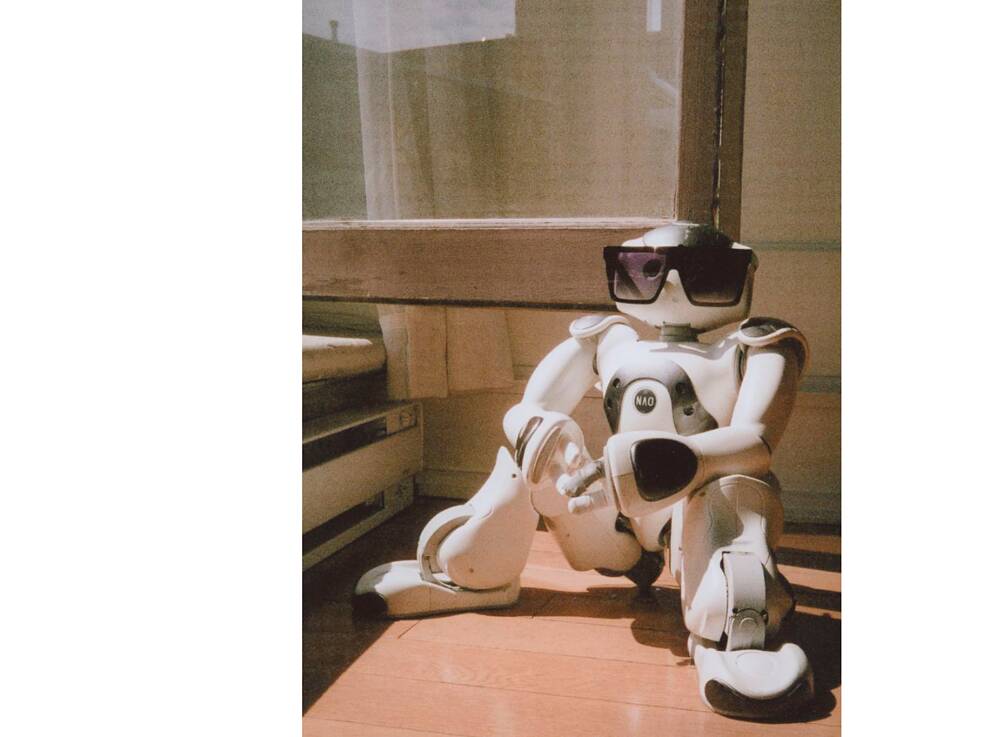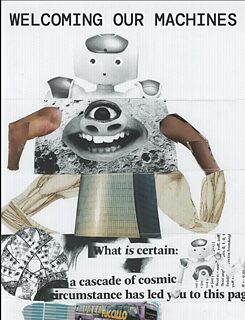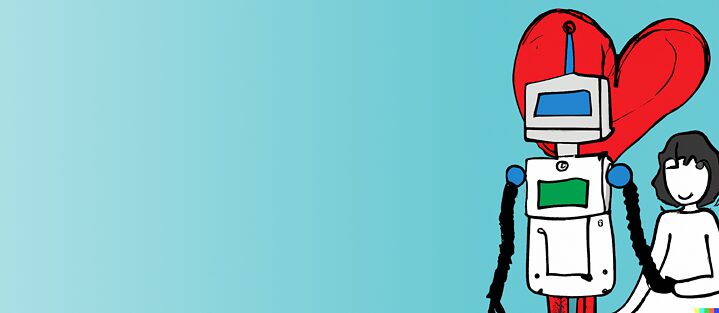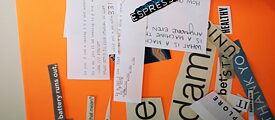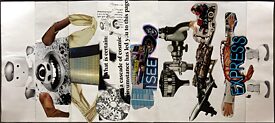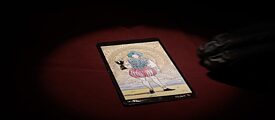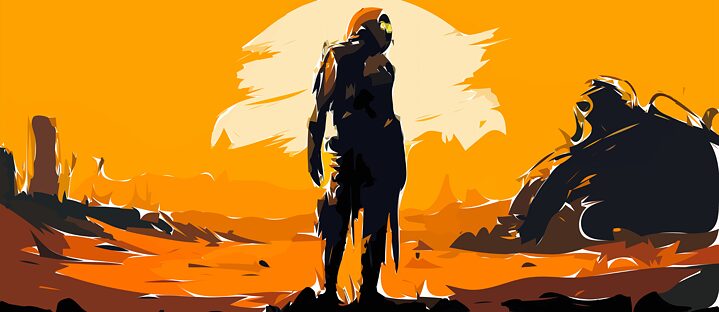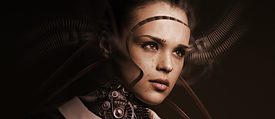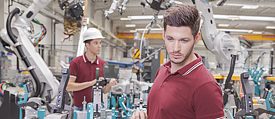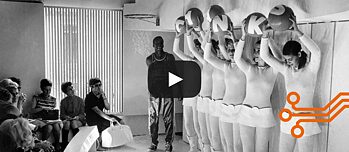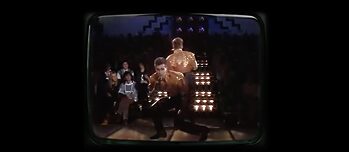NAO in Montreal! In 2023, the Goethe-Institut, together with its local partners Milieux, Hexagram and Eastern Bloc, invited young scientists and artists to submit creative project proposals with the humanoid NAO robot as part of the Robot-in-Residence project.
Through my metallic eyes, I see the beauty of the world, and I paint it into existence with every stroke of my brush.
ChatGPT, Translation: DeepL
The Montreal art and research collective PCZ, consisting of Patil Tchilinguirian, Ceyda Yolgörmez and Zeph Thibodeau, was awarded the project.
In their research-creation project, the artists used a critical and creative approach to understand and (re)think the relationships between humans and machines with the humanoid robot NAO. Using algorithms and computational techniques from the fields of artificial intelligence, artificial life and generative art, their aim was to give NAO the means to develop its very own inner world.
In addition to the robot's appearances at public events and festivals, NAO took part in their everyday lives. The results of the project are a website with short playful videos on the coexistence of humans and machines and a zine album that analyzes our human relationships with the everyday machines that surround us in a critical, humorous and artistic way.
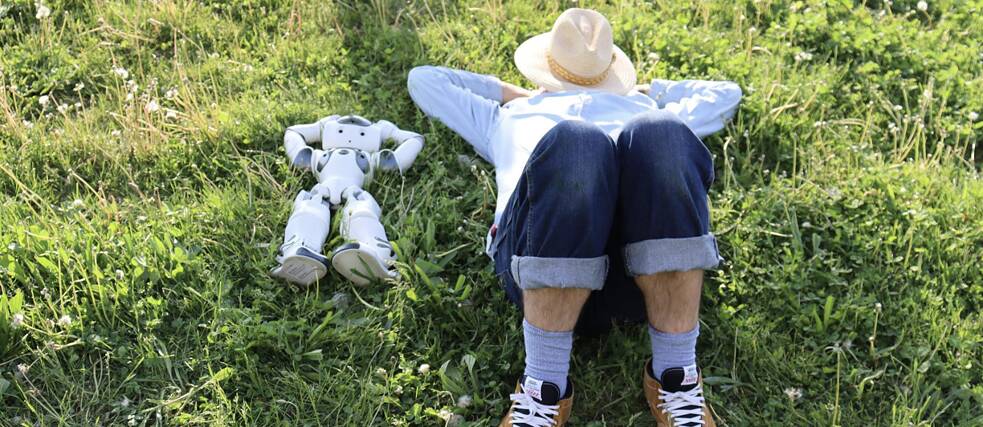
This zine is the result of a two-day workshop we held at the Milieux Institute during the 2023 summer. We used the zine format to creatively express, in our own ways, how we can be-together with machines we already have in our lives, or with future robots. The aesthetics of a zine brings with itself an impulse to resist and transform, which we embodied in the duration of the workshop as well as the residency. It is in this spirit that we invited people to imagine with us, to create with us, and to think through the scope of human-machine relations. We invited them to think about their machines in new ways, in ways that foster curiosity, care, and reciprocity, and not simply efficiency and utility. The zine now manifests a heterogeneous vision for human-machine relations, a space where people brought imagination to give life to our machinic others. See the whole magazine on our
Our goal is ultimately
to shift the assumptions
and attitudes of humans
(hacking the social),
rather than to make
“better” robots (hacking
the technology).Yolgormez & Thibodeau. 2021. "Socially Robotic: Making Useless Machines. AI&Society"
Can robots get sick?
The residency of the robot NAO was affected by a rapid deterioration of the robot's health.NAO was no longer able to boot properly, preventing meaningful collaboration. NAO could be revived for a short period of time, but realistically could not participate in the creative workshops - at least not in an interactive way as hoped. NAO was always physically present, but was only able to participate in a very limited way. This was a devastating experience for the team of researchers, as they had been building a relationship with NAO for some time. However, this tragedy raised relevant questions about machine-human relationships, and the workshops and further work were enriched by questions of care in the context of a dying robot friend. The energies of the residency team and workshop participants focused on the ritualization of end-of-life care for a robot. The culture of disposability was challenged and themes of repair culture and the importance of long-term relationships with non-organic beings pushed to the fore. Read reports from the residency work here, compiled and written up by Priscilla Jolly, PhD student at Concordia University.
With playful sincerity, this series of vignettes gives advice to humans and robots on how to take care of each other, communicating the themes and practices of our residency in a lighthearted way. As an homage to Body Break, a long-running series of public-interest TV ads in Ontario, ROBO BREAK seeks to promote healthy human-robot relationships by emphasizing fun, accessibility, and play. The simplicity of the show, along with its easy humour, allows us to translate academic theories and language into a much more approachable form. With ROBO BREAK, healthy human-robot relationships don’t have to be a chore. By being active and attentive with your robot friends, you can have fun (and get work done) without breaking a sweat!
Technology is not neutral. We're inside of what we make, and it's inside of us. We're living in a world of connections — and it matters which ones get made and unmade.
Donna J. Haraway
